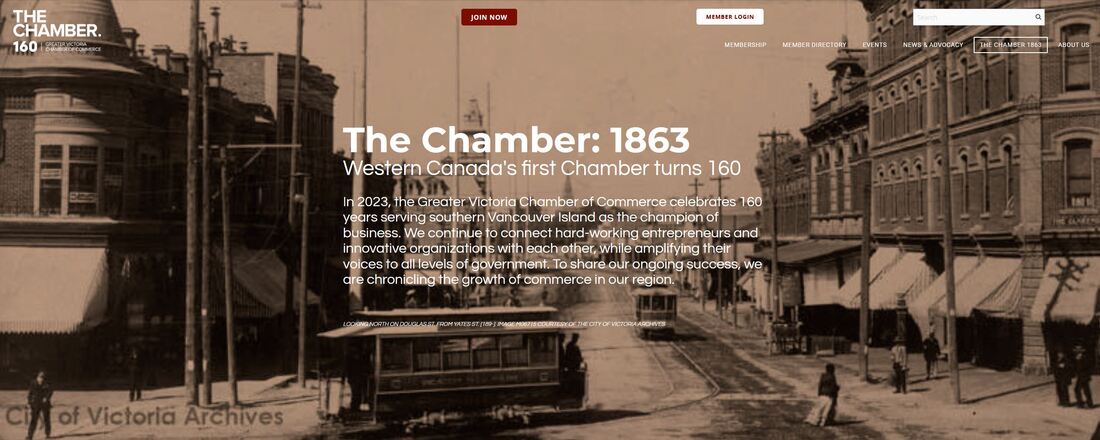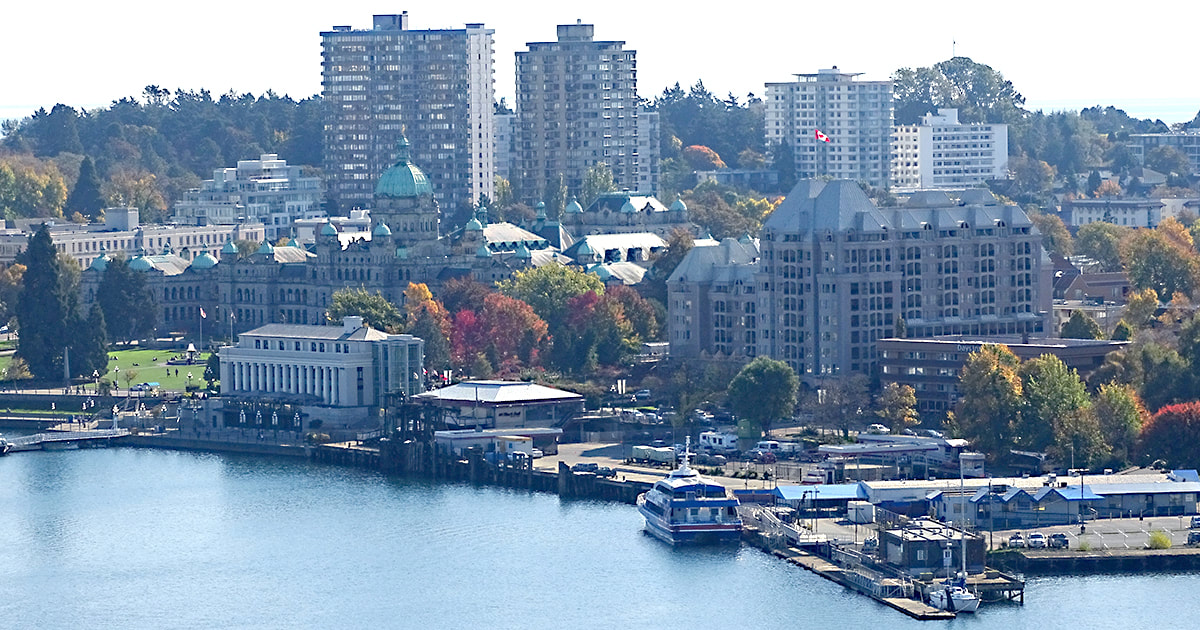 Businesses strongly support the National Day for Truth and Reconciliation, but, for some, closing up shop isn't the best way to take action. To help honour the intent of Sept. 30, the Victoria Native Friendship Centre is encouraging organizations to take the Small Business Pledge. The initiative is a way to actively participate in the reconciliation process by either making a donation or contributing a portion of sales to support VNFC's work. "In 2021, we were the first Chamber in Canada to acknowledge the impact that businesspeople had on Indigenous culture and the economy that existed before their arrival," Chamber CEO Bruce Williams said. “As an organization founded in 1863, The Chamber is part of the history of our community. We need to share responsibility for the suppression of Indigenous peoples, and we need to take action now to support reconciliation." Given that 80% of Indigenous Canadians reside in urban areas, Friendship Centres like VNFC play a pivotal role in the well-being of the urban Indigenous population in our region. To take the Small Business Pledge, all you need to do is complete the pledge form. Take the Pledge More spending and more taxes have many business groups concerned about the future after the federal government released its ambitious 2024 Budget yesterday.
"Canada must end the cycle of tax and spend politics," Canadian Chamber of Commerce Senior Director of Fiscal and Financial Services Policy Jessica Brandon-Jepp said. "Fueling economic growth is the key to improving quality of life and affordability for Canadians." The national chamber network opposes any measure that increases costs for businesses currently experiencing economic headwinds. We also will work with our members to understand how the increase to capital gains tax will impact business. "(The) budget contains few surprises. Most of the major new spending was announced by the government over the last few weeks, and the government’s projections for the deficit are largely in line with previous predictions," Canadian Chamber CEO Perrin Beatty said. "Our lagging productivity and stalled GDP growth means Canadians are becoming collectively poorer and working harder to just remain where they are today." New taxes will cover about $18 billion with about $57 billion in added spending:
The Royal BC Museum's new archives, research, and collections facility will be officially known as the Royal BC Museum PARC Campus.
The Provincial Archives, Research and Collections reflects "the critical and complex work that will take place in this state-of-the-art facility," the museum's media release said. The museum's new campus is in the City of Colwood, on the territory of the Songhees and Esquimalt Nations. The facility will be open to the public, "providing opportunities to learn more about BC’s past, provide greater accessibility to the collections, and foster a connection between all peoples of British Columbia and this provincial museum." The PARC Campus, designed with mass timber construction and LEED Gold certified, is scheduled to open in 2026. Indigenous knowledge is an invaluable resource for our region, especially when it comes to improving environmental sustainability.
"Innovation led by business is key to effective Climate Action Leadership, and investing in Nations that are doing the work to improve their communities is the right thing to do," Chamber CEO Bruce Williams said. The province's First Nations Clean Energy Business Fund is providing three communities on the South Island with more than $792,000. T’Sou-ke Nation will receive $492,910 to build and install a solar photovoltaic system, and Malahat Nation will get $149,646 to install heat pumps in priority homes as well as to conduct a band office energy assessment and a rooftop solar photovoltaic system screening. Pacheedaht First Nation is getting $149,961 to help install surge protectors and improve insulation. The next intake for the FNCEBF program closes April 30. The Chamber supports efforts to embrace and learn from Indigenous ways of knowing as an opportunity to add resilience and sustainability to our economy.
A conference set for next week in Toronto promises to raise awareness at a national level. Indigenomics on Bay Street, hosted by Chamber member Indigenomics Institute, bills itself as a "gathering to activate value creation in the $100 billion Indigenous economy." The figure represents the changing landscape of Indigenous wealth and influence on policy and business, as identified in a 2019 study. The conference is open to business leaders looking to advance the knowledge, tools and actions needed to activate economic reconciliation. For more information, go to indigenomicsinstitute.com/events/bay-street. 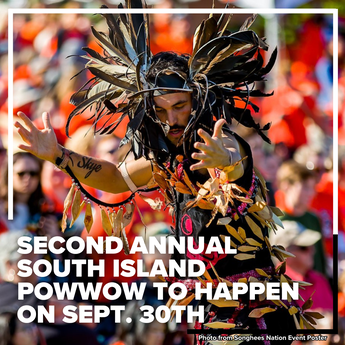 With Sept. 30 marking National Day for Truth and Reconciliation, The Chamber continues to work to support Indigenous entrepreneurs and First Nations. "The more we listen and learn, the more we understand how much we can benefit from embracing Indigenous knowledge about the lands we live on," Chamber CEO Bruce Williams said. "We have acknowledged the role we played in the suppression of Indigenous culture and commerce. Now we need to keep taking action to support the inclusion of Indigenous people and First Nations in our broader business community." Bruce and Chamber member Jamin Zuroski recently spoke with CBC Radio's Gregor Craigie about what The Chamber is doing to support reconciliation. Check out our social media this week for stories about local events happening for the National Day of Truth and Reconciliation. This week's exciting list of Chamber Auction items features some of our great Indigenous businesses. The Chamber office will be closed Monday, Oct. 2 in recognition of National Truth and Reconciliation Day. Making strategic investments in the Indigenous tourism sector would generate an additional $684 million in tax revenue that would pay for those investments in five years, says a new report by the Conference Board of Canada.
The report found that recommendations made by the Indigenous Tourist Association of Canada would greatly increase the scale of Indigenous Tourism across the country. ITAC has proposed a $2.4 billion plan, including $1.75 billion for destination development. Indigenous business support is one of The Chamber's key advocacy priorities. We all stand to benefit by having First Nations participate in the economy, and that requires supporting self-determination.
The University of Victoria recently received a federal research grant that will allow a team to "design and advance a sustainability framework for decision-making in Indigenous communities that ensures their values, knowledge and concerns are at the forefront as they assess development proposals on their lands." The UVic team will build off a successful system that has been used for five years with Toquaht Nation in BC, as well as with communities in New Zealand and Indonesia. “This project is very critical to the empowerment and self-determination of Indigenous governments and peoples," said Cloy-e-iis Judith Sayers, president of the Nuu-chah-nulth Tribal Council and a member of the project’s Council of Senior Advisors. "Basing models on traditional knowledge and ways of knowing directs the work to be done and utilizes self-determination to its fullest. Sharing models with other Indigenous communities around the world adds to the richness of what can be contained in the models. Establishing their own indicators on what is important to each Nation is also building on governance and putting the decision making in the hands of the people.” The Songhees Nation Chief and Council have announced on LinkedIn that Rosa Horne will be their next Executive Director. "Rosa is a Member of the Stz'uminus First Nation in Ladysmith and acknowledges her gratitude to live, work, and play in the W̱SÁNEĆ territory over the last 19 years," states the post.
Rosa has a Master of Business Administration with a specialization in Indigenous Business Leadership. A panel of experts has been tasked with developing a Community Safety and Well-Being Plan for the City of Victoria. The goal is to address multiple complex issues such as "declining civility and social cohesion, increasing social disorder, inadequate housing supply and homelessness, poverty, inequality, addictions, mental and physical health challenges, criminal activity and other factors."
The panel will work over the next 15 months to advise Victoria council on immediate interventions as well as long-term solutions. "I’m in frequent contact with the business community throughout the downtown and beyond and I’m consistently hearing that the impact of the pandemic is far from over," Fort Properties Ltd. CEO/co-owner Suzanne Bradbury said in the city's news release. "I believe that this is the right initiative at the right time and I’m honoured to bring a small business perspective.” Along with Bradbury, the panel includes:
The Chamber promotes Indigenous economic reconciliation by listening and then acting on how to best support First Nation businesses in Greater Victoria.
To mark National Indigenous Peoples Day today, we encourage you to participate in local events and show your support for the thriving Indigenous business community. Check out the Chamber's directory for Indigenous Owned Business for a list of incredible local businesses run by Indigenous Peoples. "In Greater Victoria, we are responding to the Truth and Reconciliation Commission's Call to Action No. 92," says Chamber Vice-Chair Christina Clarke, executive director of the Indigenous Prosperity Centre. "We seek to not only include Indigenous people in the economy, but to transform the economy, as we incorporate Indigenous wisdom for a sustainable future and prosperity for all." Check out the recent Chamber Chat with Christina Clarke and Chamber CEO Bruce Williams. A new Indigenous business directory was launched in Greater Victoria today with a goal to support Indigenous economic reconciliation by building new relationships and connections.
The South Island Indigenous Business Directory is the result of work of community partners, including The Chamber. "The Greater Victoria Chamber of Commerce, on behalf of our members, is honoured and humbled by the work done to establish an Indigenous Business Directory," Chamber CEO Bruce Williams said. "The Chamber is committed to taking actions towards reconciliation and inclusion and we are working to connect Indigenous entrepreneurs and First Nations with the broader business community. We can all benefit from being more inclusive and incorporating the knowledge of people who have called this region home for time immemorial." The new directory provides opportunities for relationships, growth and partnership between community members and the many Indigenous-owned businesses across the South Island. From graphic design, art and web design to engineering, project management and catering, the directory currently features more than 50 Indigenous companies. View the directory at indigenousbusinessdirectoryvi.com. The provincial Indigenous Food Systems and Agriculture Partnership Program supports Indigenous governments, communities and businesses with agriculture, food processing and food-systems planning, as well as training and skills development, technological adoption, scaling up productivity and profitability, and climate change adaptation.
Among the projects in our region, the Victoria Native Friendship Centre received $80,000. The funds will be used to work on the Oak Bay property gifted to the centre by the late Marion Cumming. The plan is to remove invasive plants, add native plants, beehives, pollinator plants and increase food security in the community by growing year round. The Moose Hide Campaign, an Indigenous-led movement standing up against violence towards women and children, is holding a Walk to End Violence on May 11, 12-1pm, starting at Thunderbird Park at Douglas and Belleville streets. Participants are encouraged to bring a drum. For more info, including how to hold a walk in your community, contact 250-882-7018 or [email protected].
Registration is now open for organizations and individuals interested in taking part in this year's Moose Hide Campaign Day on May 11. There is also a separate registration for schools with K-12 classes looking to participate.
The Moose Hide Campaign Development Society helps promote safe communities by calling for all Canadians to speak out against violence towards women and children. Last year, more than 400,000 people took part. This year's Moose Hide Campaign Day event will be held May 11 in Victoria and livestreamed across the country. The day begins at 7 am with a sunrise ceremony and ends with a fast breaking followed by Community Feast from 6 to 7 pm. The court-imposed deadline for deciding the future of the Island rail corridor arrived yesterday, but there is still much work to be done to decide the fate of the former E&N Rail line.
"In September 2021, the British Columbia Court of Appeal asked the federal government to decide by March 14, 2023, on restoring the railway corridor or allowing a segment of lands to vest in Canada for the use and benefit of the Snaw-Naw-As First Nation," said a joint statement by the federal and provincial governments, explaining that the decision was made to return 11.4 acres to the Snaw-Naw-As. The corridor still has tremendous potential for Vancouver Island, which is expected to reach a population of more than one million people in the next decade. “To that end, we are committing $18 million to allow for future corridor planning involving affected First Nations and regional districts," BC Minister of Transportation and Infrastructure Rob Fleming said. "The funding will also allow First Nations to assess identified concerns such as flooding, access, noise, or safety issues where the corridor crosses their land." The Island Corridor Foundation had been waiting for the governments to announce their intention, and will now begin reviewing options for the best use of this important transportation link. After hosting The Chamber's 160th celebration, the Royal BC Museum continues its work reinventing itself for the future. The Victoria landmark has long been an important anchor for tourism business that cater to the visitors attracted to our destination. The museum lobby is currently hosting the 17th annual Mammoth Sale, featuring props from former exhibits as well as merchandise from the gift store.
On Monday morning, the museum was the site of an inspirational moment as members of the Nuxalk people were on hand to receive a totem pole that was taken from its home near Bella Coola in 1912. The pole will make its way back to Nuxalk territory. "The museum is part of the fabric of Greater Victoria and many people feel strongly about what they want to see happen," Chamber CEO Bruce Williams said. "I'm fully confident in the work that museum staff are doing to modernize their facility, and The Chamber is excited about helping to ensure the museum continues to serve its important role in our region for generations to come." When you're used to looking to the future, it can be a little awe-inspiring to look back and see how far we've come.
On Thursday, Feb. 9, The Chamber celebrates our 160th anniversary with a special sold-out evening planned at the Royal BC Museum. The gathering is another great way for Chamber members to connect while discovering some of the fascinating stories that have shaped our region and our organization. It's the first of many opportunities planned throughout the year. Another way you can join in our celebration is with The Chamber 1863 web project, which takes a deep dive into the history of our organization and the many communities that contributed to the growth of trade and commerce in our region. It's a fascinating look at people who left a legacy, and a chance to better understand the struggles of those who overcame discriminatory social and political practices of the times. The site is live now, and is a living project that we anticipate will continue to grow as more information and content becomes available. Have a look at make sure to follow The Chamber's social platforms for ongoing updates on the project. Send your feedback to [email protected]. The Chamber supports the provincial government's effort to make National Truth and Reconciliation Day on Sept. 30 a statutory holiday.
"We know statutory holidays directly impact employers but, to their immense credit, chamber members have said they believe in honouring the resilience of Indigenous communities in the face of intergenerational trauma," Chamber CEO Bruce Williams said, noting the solemn tradition of wearing orange shirts on Sept. 30 has helped raise awareness of Indigenous issues. "Taking action on reconciliation is in everyone's best interest as we build a more inclusive economy." The province announced the proposed legislation yesterday, though many collective agreements in BC have recognized the federal holiday since 2021. Sooke Mountain and Discovery Island Marine provincial parks could be included in treaties with the T’Sou-ke Nation and with the Songhees Nation, the province announced Monday.
"Treaties help everyone in BC by providing better clarity for First Nations and surrounding communities and will result in better social and economic opportunities for all communities in southern Vancouver Island,” BC's Minister of Indigenous Relations and Reconciliation Murray Rankin said. The move is part of ongoing negotiations with the Te’mexw Treaty Association, consisting of the T'Sou-ke and Songhees, as well as the Malahat Nation, and the Beecher Bay (SC’IA⁄NEW) and Snaw-Naw-As nations. Sooke Mountain Park is being considered as part of the T’Sou-ke Treaty, while Discovery Island Park is being considered as part of the Songhees Treaty. To learn more about how the Te’mexw treaties will create jobs, promote investment and economic development, build housing, support tourism and encourage investments in infrastructure, in-person open houses are planned for:
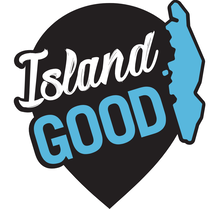 Changing times create disruption but also present tremendous opportunities for forward-thinking organizations. The tide of high inflation has highlighted the need to create more resilient local production and supply networks. Groceries are a good example of the need for investment in suppliers located closer to home. The provincial government's Buy BC program and the Vancouver Island Economic Alliance's Island Good shows the value of supporting innovation led by business. On Monday, BuyBC hosted an event in Victoria called Every Chef Needs a Farmer, Every Farmer Needs a Chef. Among the exhibitors was Finest at Sea Ocean Products. "There is clear evidence of the value that bring local brings to a community, but it's not always top of mind when we're at the grocery story purchasing produce for our families," Chamber CEO Bruce Williams said. "The Buy BC and Island Good programs makes it easier to remember the value in buying local, both in terms of freshness and health as well as in ensuring local farmers feel they are supported so they can take the risks needed to build their business." 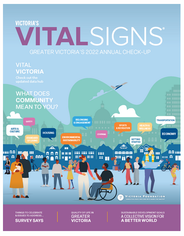 Housing remains a drag on the vitality of our region, though overall quality of life in Greater Victoria has improved. According to the 2022 Vital Signs Report, released this week, Greater Victoria's grade has moved up from a B grade last year to a B+ this year. Housing earned an F grade this year, a significant drop from a D+ last year. "Vital Signs is a great check up on our region's economy, and The Chamber was happy to contribute as a community partner this year," Chamber CEO Bruce Williams said. "The grades are a good way to illustrate concepts that contribute to our overall quality of life." It's the 19th edition of the annual report, which uses surveys as well as stories and graphics to provide snapshots of the past year. This year's theme asked What Does Community Mean To You? Respondents rated the natural environment and climate as the best things about Greater Victoria. The aforementioned Housing crisis and cost of living were the two most important issues, according to the survey. The report looks at 12 areas, with grades ranging from a B-plus for Learning and Sports and Recreation, to an F for Housing and a C- for Health and Wellness. 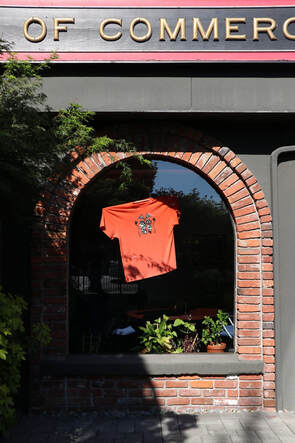 Friday, Sept. 30 is the National Day for Truth and Reconciliation — a time to reflect on the history of residential schools and to listen with purpose to the stories of our Indigenous friends and neighbours. "We will wear our orange shirts in support of everyone affected by the trauma that has left such a deep bruise on our society. We must acknowledge our role in this painful history and take action to change," Chamber CEO Bruce Williams said. "The Chamber will continue our work to support Indigenous owned and operated businesses as they are vital contributors to our region's economy." For information on The Chamber's Indigenous Economic Reconciliation Table, please email [email protected]. What's happening on National Day for Truth and Reconciliation Here's a look at some of the events happening in Greater Victoria for the National Day for Truth and Reconciliation. The Songhees Nation hosts the South Island Powwow Friday. The first-of-its-kind event is free and is "an opportunity to recognize Survivors and their families in the spirit of reconciliation. Through song and dance, we will celebrate traditional Indigenous cultures and resiliency." Municipalities across Greater Victoria are hosting events to commemorate and celebrate indigenous voices. Across all 13 municipalities, flags will be flown at half-mast on Sept. 30, and events for reflection include: The City of Victoria hosts the Xe xe Smun' eem-Victoria Orange Shirt Day: Every Child Matters Ceremony from 10 am to 12:30 pm at Centennial Square. The event includes Indigenous performances, a minute of silence, and guest speakers sharing their personal experiences with residential schools and reconciliation. The District of Oak Bay hosts a truth and reconciliation event at the Sno’uyutth Welcome Pole at Oak Bay High School starting at 9:30 am. The pole, designed by Songhees Nation elder Butch Dick, symbolizes the beginning of a new relationship between the Oak Bay community and the Songhees and Esquimalt peoples Along with the region’s municipalities, post-secondary institutions have committed to close their campuses on Sept. 30 and are offering informative and inclusive events: The University of Victoria hosts various reconciliation events throughout the week. From informative lectures to workshops, students and faculty are invited to wear their orange shirts on Sept. 29 in the quad to witness the lighting of the Sacred Fire. The fire will burn until 3 pm that day, and visitors can listen to stories from residential school survivors, witness reflections and celebrate this year’s theme: Indigenous resurgence. Royal Roads University invites the community to join in-person and virtual events to honour the strength and resilience of Indigenous Peoples. This year, Royal Roads will raise the Survivors' Flag to honour residential school Survivors and all the lives and communities impacted by the residential school system in Canada. Each element depicted on the flag was carefully selected by Survivors from across Canada, who were consulted in the flag’s creation. Camosun College has created an Orange Shirt Day research guide to assist those in learning about the importance of honouring Indigenous voices. Camosun hosts an event at Na’tsa’maht: The Gathering Place, Lansdowne Campus on Sept. 29 at 1:30 pm with guest speakers Eddy Charlie and Kristin Spray attending. The Chamber applauds the provincial government's initiative to seek public input on plans to rejuvenate Belleville Terminal.
The facility in the Inner Harbour has served as a gateway for international visitors arriving by water since 1924. As a champion of our region's tourism industry, The Chamber has consistently advocated for the terminal and the need to modernize it with the times. "We've been calling for renovations for decades, and it's taken time to get all levels of government onboard," Chamber CEO Bruce Williams said. "Now that we've done that, there's no time to lose. The requirements to be a border crossing have changed and there's a real risk we could lose our port of entry." More than 680,000 passengers travelled through Belleville Terminal in 2019 and spent about $174 million in Greater Victoria, says the province's project plan. Belleville Terminal generates 220,000 overnight visitors and sells over 16,000 vacation packages annually to their passengers, all of which are provided by local businesses in Victoria. The province is developing a business case for the project. It's expected to cost up to $290 million and be completed by fall 2027. A temporary terminal will be built until a new facility is ready. With a little more than one month before the National Day for Truth and Reconciliation on Sept. 30, demand is high for orange shirts that are traditionally worn as a show of support. The Vancouver Island Construction Association is offering to order shirts on behalf of companies. The deadline to order is 2 pm on Aug. 18. Check out VICA's latest newsletter for info on how to order.
|
Categories
All
|
Copyright © 2021 Greater Victoria Chamber of Commerce. All rights reserved.
#100 – 852 Fort St., Victoria, BC V8W 1H8, Canada | Phone: (250) 383-7191
[email protected] | Site Map
#100 – 852 Fort St., Victoria, BC V8W 1H8, Canada | Phone: (250) 383-7191
[email protected] | Site Map
Notice a typo or broken link? Please let us know so we can fix it ASAP. Email [email protected]

